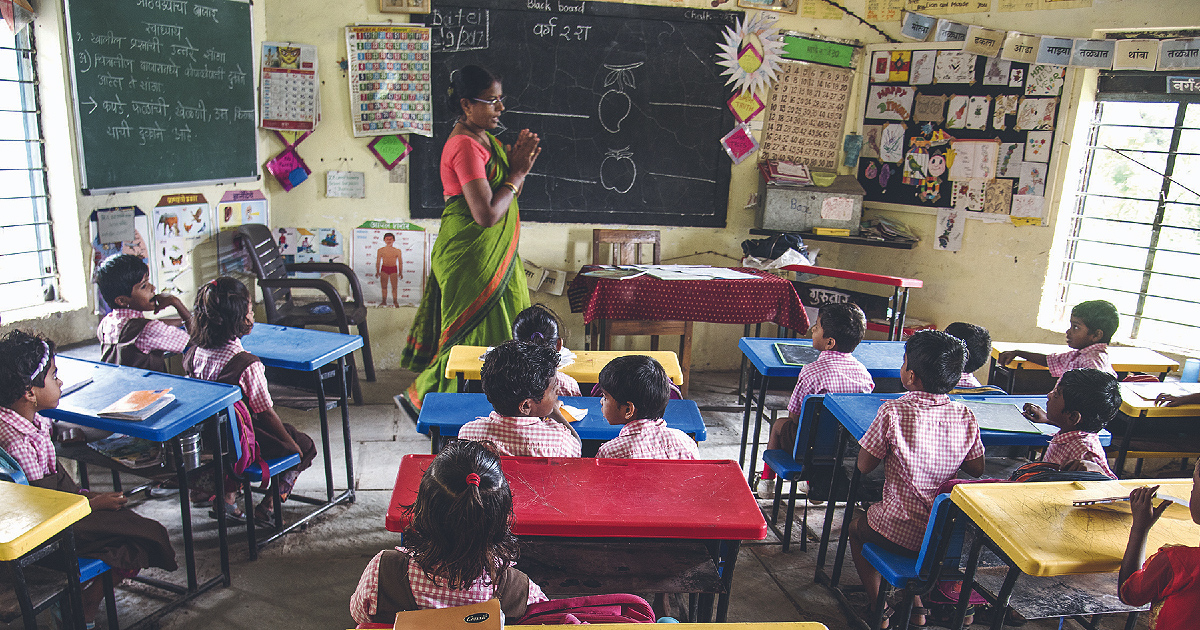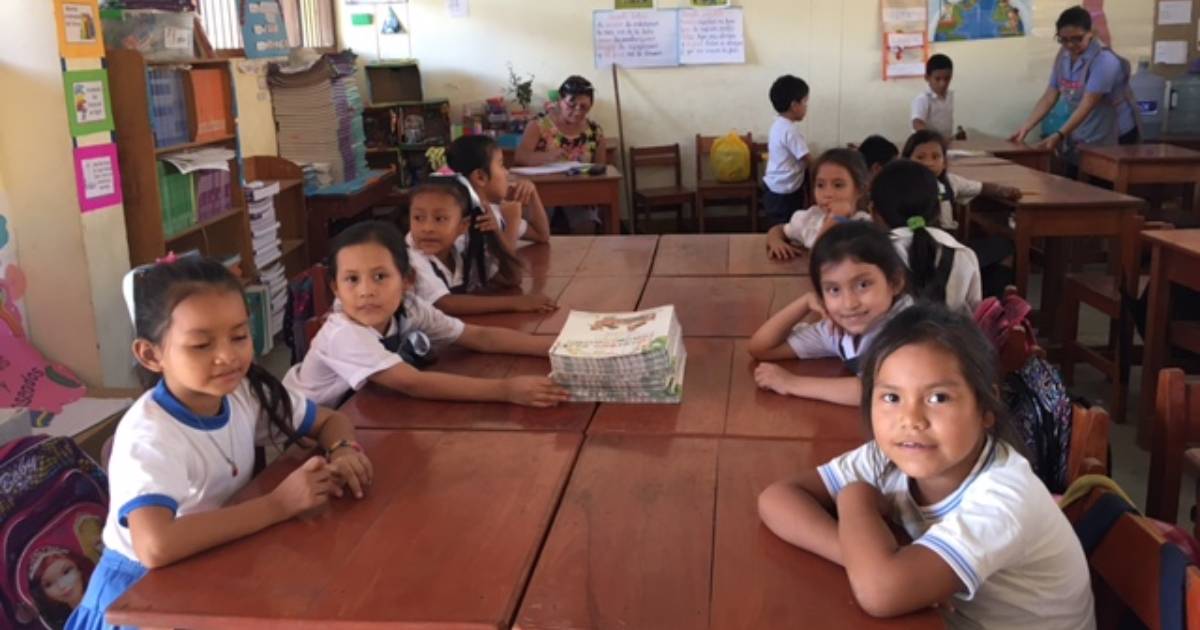This year marks the halfway point towards achieving the 2030 Global Agenda for Sustainable Development, which the UN member states adopted in 2015. Despite progress on Sustainable Development Goal 4, 763 million young people and adults and 250 million children lacked basic literacy skills in 2020. In addition, lingering concerns surrounding pandemic-related school closures and disruptions remain: the estimated proportion of 10-year-olds in low- and middle-income countries (LMICs) who cannot read a simple text rose from 57 percent in 2019 to 70 percent in 2022.
Improving the quality and inclusivity of literacy is part of the larger transformational role the education sector will have in addressing global inequalities to ensure a pathway for sustainable development. It is therefore fitting that this year’s International Literacy Day focuses on promoting literacy as a means of building the foundation for sustainable and peaceful societies.
There is strong evidence highlighting how literacy and numeracy skills programs can improve well-being beyond academic attainment and skills development. In 2021, working with USAID, we reviewed the evidence on whether education programs from across the world can prevent or mitigate violence or crime. The theory of change based on the literature shows that literacy and numeracy programs (among 42 other programs reviewed) can improve academic learning and social-emotional skills development, the environment in which children and youth grow, and protective behaviors, and reduce school-based bullying, violent crime, and non-violent crime. Improved social-emotional learning (SEL) can reduce the likelihood of engaging in violence and crime by strengthening a person’s ability to control behavior, helping them think through problems in ways that lead to solutions that avoid violence, and reducing the risk of engaging in risky behaviors. SEL can also improve educational attainment, which can facilitate better employment opportunities and higher earnings, and decrease the likelihood of directly engaging in violence and crime. Evidence also shows that literacy programs help enhance domestic values, improve engagement with civil society, and boost community solidarity. In addition, there is growing acknowledgment that education can support individual resilience, which can improve climate change adaptation and mitigation measures.
A few program types that are commonly funded in the education sector typically include some literacy and numeracy instruction. These include literacy and numeracy programs delivered in school or outside of school through family programming, and programs for out-of-school children and youth such as complementary basic education (CBE), accelerated education programming (AEP), and adult basic education (ABE) programs.
High-quality literacy and numeracy programs can improve social-emotional outcomes and protective behaviors, which are outcomes correlated with reducing violence and crime. Literacy and numeracy programs typically include elements to improve the teaching of literacy and numeracy in schools such as teacher training and curriculum improvements, literacy-focused after-school programming, or family and community engagement. For example, a UNICEF-funded quasi-experimental evaluation of a child-to-child tutoring program in Ethiopia found that task persistence and confidence were significantly higher among young children in the treatment group than among those in the comparison group. However, a 2018 experimental study in Zambia suggested that an SMS text messaging reading program for families had no significant effects on a child’s likelihood of participating in out-of-school reading programs in the community, a key protective behavior among the outcomes correlated with reducing violence and crime.
Research on programs for out-of-school children and youth, such as CBE and AEP, rarely looks at outcomes related to violence and crime. Programs for out-of-school children and youth often include literacy components to give youth the opportunity to acquire and certify basic skills so they can reintegrate into the formal school system, technical or vocational training, or the labor market. There is limited evidence on the role that CBE can play on outcomes related to violence and crime, though a few studies have shown that it may improve social-emotional abilities and protective behaviors. For example, a 2015 qualitative evaluation of a nine-month CBE program in Malawi that focused on literacy found improvements in self-reported confidence in social situations and general self-esteem among out-of-school girls ages 10 to 19 years four years after the program began. AEP may have a positive effect on social-emotional skills, risky and protective behaviors, violent crime, and nonviolent crime; however, the strength of the evidence is weak and some findings are mixed. For example, qualitative studies of government-sponsored AEP in Colombia suggest that the program enables participants to develop emotional self-regulation, increase self-esteem, and improve communication skills. In Panama, a quasi-experimental evaluation of an AEP found that, despite significantly reducing children’s time spent on economic activities, there was no effect on time spent in extracurricular programs.
However, emerging evidence suggests that ABE programs have positive effects on social-emotional abilities, environmental factors, and the protective behaviors of participants. ABE programs include partial or full literacy programs designed for illiterate or low-literacy adolescents and adults. A quasi-experimental evaluation in India suggests that adult literacy programs can produce strong, positive impacts on social-emotional skills, the family environment, and risky and protective behaviors. Program participants (women age 15 years and older) were significantly more likely than similar women not in the program to be engaged in community groups and significantly more likely to report that victims of domestic abuse should seek help outside the family from local leaders and police. Similarly, evidence from an adult literacy program in El Salvador suggests that the program reduced the shame of illiteracy experienced by participants, increased their confidence, and enhanced their social cohesion.
Based on our review of the evidence, we recommend the following:
- Continued funding for reading and literacy programming in schools as a means to improve social-emotional outcomes and protective behaviors, and reduce violence and crime. Funders should also support family and child-to-child literacy programs that have proven effective in improving social-emotional skills. These family and peer-to-peer programs may have an added benefit of improving the family environment (for family programs) or social-emotional skills among youth tutors (for peer-to-peer programs).
- Project implementers and researchers should also focus on understanding which components of literacy-related programs produce desired outcomes and for whom. It is clear that programming involving literacy and numeracy can help young people develop social-emotional skills, protective behaviors, and family environmental outcomes, but it is unclear which components make the biggest difference. For example, additional research is needed to understand whether the improvements in correlated outcomes seen with family literacy programs are due to additional caregiver contact or the literacy and numeracy programming itself. Likewise, it is unclear whether program impacts are heterogeneous across different subgroups, such as girls and young women.
- Funders should support rigorous high-quality research that incorporates measures of violence, crime, and correlated outcomes for CBE programs, AEP, and ABE programs, while noting that such programs are often challenging to evaluate due to their nature and the underlying problem they are attempting to address. A first step would be to track outcomes other than academic attainment and skills development—particularly SEL—for all programs, even if the goals of specific programming do not include these other outcomes. Additionally, the increased availability of literacy data sets and government policy data could allow researchers and practitioners to draw clearer conclusions about the long-term impacts of such programs, as well as expand our understanding of which interventions work in different contexts.
- With continued resource constraints in the education sector in LMICs in particular, documenting the costs and cost-effectiveness of programs is essential. This information will help policymakers understand not only what works, but whether successful programs produce benefits that justify their costs.
USAID is working on extending the evidence review to better tailor education and literacy programs in Central America. More information on this effort is provided in a recent podcast episode.
While there is emerging evidence that literacy-related programs can impact outcomes correlated with reducing violence and crime, such as social-emotional skills, environmental factors, and protective behaviors, there is still work to do to understand what works best and for whom, at what cost, and across different contexts. Policymakers should incorporate the lessons learned from the research to date and build on them as new evidence emerges about the effects of literacy programs.




